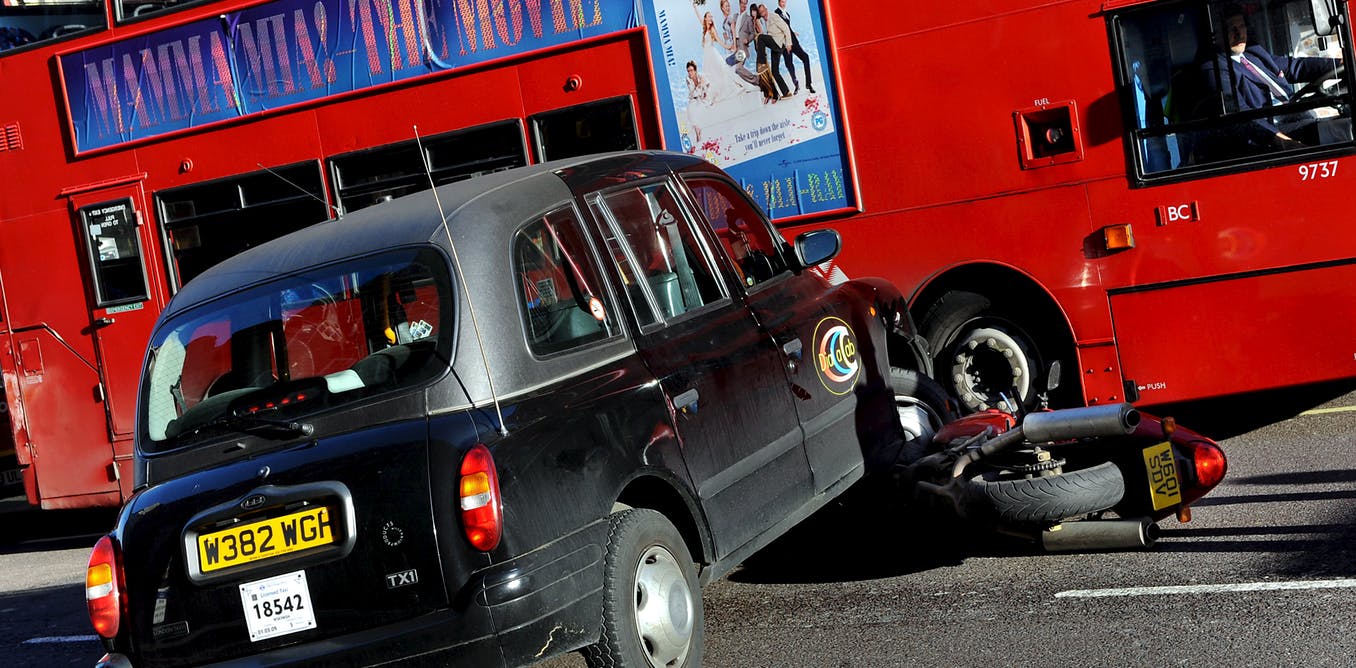London’s congestion charge increases speed and saves lives

London has long been one of the world’s most congested cities. Before a £5 “congestion charge” was introduced for vehicles entering the city centre, cars would spend a third of their time in peak hours at a complete standstill. The charge, introduced in 2003, was hailed as a triumph of economics as it forced those who contributed to congestion to pay a price that reflected its cost. As economics would suggest, traffic decreased and journeys became quicker.
Traffic accidents and related injuries and fatalities weren’t the main target of the congestion charge, but they may have been influenced by it. On the one hand, reduced congestion means fewer cars are in central London with an expectation of fewer accidents. On the other hand, less traffic means higher travel speeds, which generally leads to more accidents – particularly in a dense area such as central London where cars, cyclists and pedestrians share the road.
My research with John Heywood of the University of Wisconsin-Milwaukee and Maria Navarro of Lancaster University is the first major study of the congestion charge’s effect on traffic accidents and their severity.
The congestion charge zone covers central London.
openstreetmap, CC BY-SA
One issue is that we simply don’t know what would have happened to accidents in the congestion zone had there not been a charge. Comparing the number of accidents before and after charge is not enough, as we might simply be observing something that would have happened anyway. It is well known that the number of traffic accidents has been steadily declining across the UK in the past decade.
This means we need to define appropriate comparison or control groups. In this case, we used the most populous 20 cities in Britain, not including London. We contrasted the change in accidents in the congestion charge zone to that change over the same period in these other cities. We use the fact that the downward trend in accidents happens in both London and the comparison group to more accurately identify the influence of the charge.
The congestion charge reduced traffic accidents in central London by 30 a month – an enormous 40% reduction. Accidents that result in individuals being killed or seriously injured also fell, by just under four a month, or 45 a year. This means around 500 people have avoided serious injury or death thanks to the congestion charge.
Congestion charge means fewer accidents in London:

Accidents in central London (red line) vs 20 other cities (blue line)
Green et al, Author provided
We next explored any negative “spill-over” from the policy. Did the congestion zone just move traffic to other parts of London, other times of the day, or to non-charged vehicles? If the answer is yes, reduced accidents may be offset by more car crashes and fatalities elsewhere and at other times.
This isn’t the case, however. We examined areas surrounding the congestion charge zone – both a 2km and a 5km radius – and we found that, not only did accidents not increase in these areas, there was actually a large positive spill-over. The charge decreased accidents dramatically in the surrounding areas – about 20 fewer total accidents a month, with 3.5 fewer serious or fatal accidents. Our estimates also show that accidents and injuries were reduced in non-charged times (before 7 am and after 6 pm) and for exempt vehicles (largely bicycles, motorcycles, taxis and buses).
The charge meant more people rode bikes into central London – that was the idea. Our research confirmed that one unanticipated effect of the congestion charge was a small initial increase in accidents involving cyclists, roughly 1.5 a month up to 2005. Yet, by the end of 2006 we found this had reversed and that the rise didn’t carry on. It seems likely to us that an initial response to the congestion charge was that more inexperienced cyclists took to the roads. In time, they either gave up or became more worldly.
Is the congestion charge set at the right level? Since the initial £5 charge in 2003, it has been raised twice, £8 in 2005 and £10 in 2011. These changes and inflation allow us to see what effect a £1 real charge has on accidents. Our results show that each pound increase in levy reduces accidents by 5 per month. While we can’t say what is the “right” charge, our work suggests it’s not just the fact that the charge exists that matters. It may not be great news for commuters, but a more expensive charge might well reduce traffic accidents further still.

Colin Green does not work for, consult, own shares in or receive funding from any company or organization that would benefit from this article, and has disclosed no relevant affiliations beyond their academic appointment.







